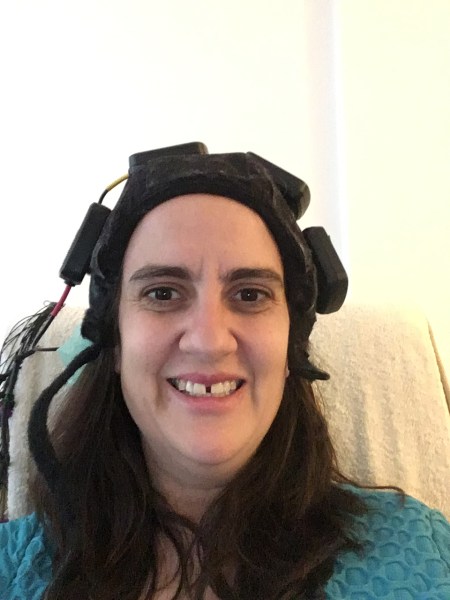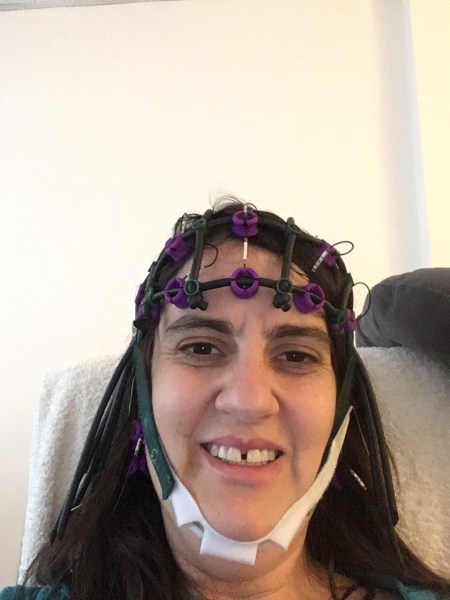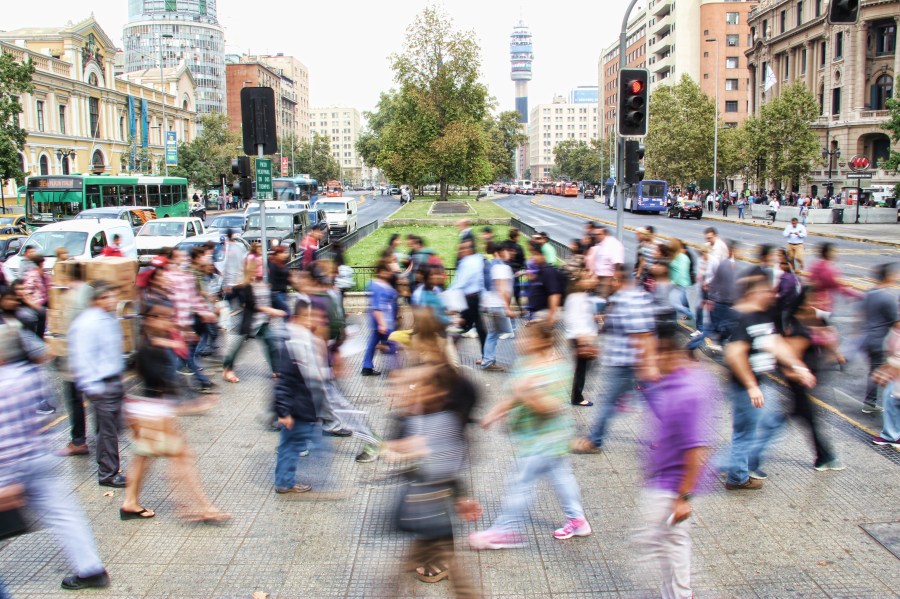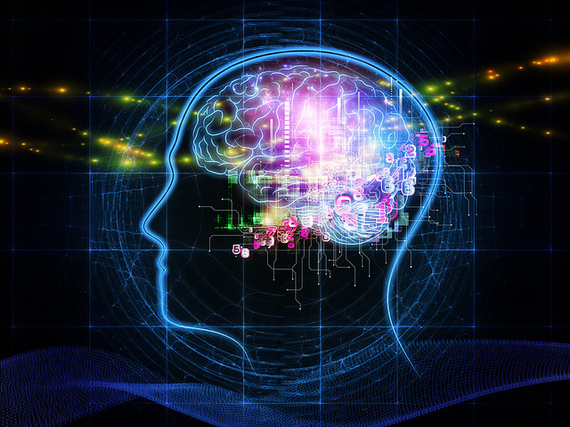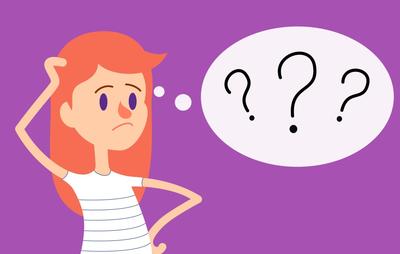My children go to Jewish schools and don’t know the words of any Christmas carols but even they love looking at the beautiful Christmas tree that lights up the dark night outside our local church and comparing the different decorations that adorn local homes. We live in such a politically correct world that we say to each other ‘season’s greetings’ but even though I’m not celebrating Christmas, I can’t get away from it. So since it is this time of year I thought it was a bit silly to give you a ‘seasonal’ update, but instead I’ll give you a Christmas one – here it is:-
I have been making progress with the neurofeedback. I have had over 15 sessions and Ms Brain had also given me what I call my ‘rave kit’ to wear once a day. The ‘rave kit’ consists special glasses which, when linked up to a small black device, have flashing lights and a pair of headphones which when similarly linked make sounds like a quiet pneumatic drill. The idea of my personal sound and light show is that the frequencies emitted would have an impact on the neural activity of my brain and would give my brain an extra boost between neurofeedback sessions. I know what you’re thinking. ‘Sharon, you’ve got epilepsy – how can you wear glasses that show flashing lights? Surely you will have a seizure.’ Well no – because only 5% of people that have epilepsy have photosensitive epilepsy[1] and in any case the glasses had been designed with people with epilepsy in mind. But, Ms Brain and the manufacturer’s instructions said that all people with epilepsy should be cautious about wearing the glasses. So I took the necessary precautions. The first few times I used them I made sure that there was someone in the house with me – just in case. But I didn’t have a seizure.
The brain stimulation, neurofeedback and glasses are making some difference, but as with the ketogenic diet it is not the radical shift that I crave. Now in the morning when I wake up I do think ‘What am I doing today?’ (This is the planning element of a person’s thinking which most people take for granted but is actually an important cognitive function). The other day an email from my youngest daughter’s school suggested that she might leave late that day and I actually thought ‘Oh dear, this might make me late for picking up my other children’ (I have learnt the hard way that this part of cognition is called processing – linking one piece of information to other information). This seemed to be a new way of thinking about things for me. However, I was unable to perform the problem-solving element of this task ie now that I have this information, what should I do with it. Instead I just panicked and didn’t know what to do if I was late – but it was a start, it was a shift in thinking.
However, I am very aware that I have this fog in my head – I can almost feel it. I still walk around in the kitchen, not really knowing what I am supposed to be doing and although I ‘organised’ a family Chanukah party at my house I didn’t think about the fact that we might need some food for the festivities until about an hour before the party began.
So, I was pleased with my progress, but I was becoming a bit despondent and wanted more. And it just so happened that I had an appointment with a new neurologist to give me a second opinion about whether I could take a prescribed version of cbd oil. But directly before the appointment I was asked to participate in a study to improve scientists understanding about epilepsy using trans magnetic stimulation. I was very interested in this and was happy to participate but I knew that it was not going to directly help me. It would take at least another two years to complete the study but that I realise is not their biggest challenge. The biggest challenge researchers face, especially if they find something that is perceived as being new or controversial, is getting the results to seep into the psyche of neurologists, doctors and more importantly politicians. Even though, as I have said before, there is a huge amount of research which evidences that the ketogenic diet can help adults with epilepsy- it simply isn’t at the forefront of most neurologists minds when they are treating it. There is research that suggests that neurofeedback can treat people with epilepsy but it is considered radical and although there is plenty of evidence that cbd oil can improve the lives of those with certain types of epilepsy, in the UK at least, it is still almost impossible to get it prescribed. So, I took part in the study in the hope that future generations might somehow benefit from it but I knew the results wouldn’t help me personally.
I went to my appointment with CBD neurologist expecting very little from it. I knew that I was unlikely to be prescribed cbd oil. But it’s worth turning up to these appointments, just in case. He told me that one of the reasons that practically no one had been prescribed it since it was licensed was because it costs £2000 per month and that the government has yet to give guidance on who should get it – that will come next October. He is going to put me on a list of 100 people who had expressed an interested in being prescribed it but he also told me what I already knew – there wasn’t much evidence that it would treat my type of epilepsy.
Since I was there, I asked him to review my case. It was unusual, he said to have my type of epilepsy with the cognitive difficulties that I had. He suggested a change in antiepileptic – something a little outside of the box – a new type of drug that is not licensed for my type of epilepsy, but has less side effects. I might as well give it a go. However, it wasn’t in his gift to prescribe it to me because as a top ranking neurologist at a leading hospital specialising in brain disorders, he didn’t have access to the money to pay for that. Only my GP could do that because they hold the purse strings. So that’s where I go next – to my GP, to ask for funding for different meds. I’m not discounting the importance of the neurofeedback. I don’t believe that only one approach will work for me but I think that there is a barrier from preventing me from making any further improvements with it and that barrier could be the drugs. Although a bit despondent and fed up I must Keep Calm and Carry On and I’ll fill you in on what happens next in the (secular) New Year.
——
There is a connections between the messages of Christmas and Chanukah – both are stories of how a small miracle (the birth of a child\ oil which was meant to last one day lasting eight days) can have a huge impact on the world (the growth of monotheism\ the continuation of the Jewish people). I pray that the small miracle of a different drug has a huge impact on my life. Wishing all those that are reading a happy Christmas break (apart from those in Israel who don’t get a break) and many small miracles in your life which might lead onto bigger things.
[1] https://www.epilepsysociety.org.uk/photosensitive-epilepsy?gclid=EAIaIQobChMI1IP646CS3wIVarXtCh3zWA5DEAAYASAAEgKM-fD_BwE#.XAzId3T7RPY
Go to sharonrosswrites.com for more information about me.
To receive updates of my blog go to https://www.facebook.com/groups/371346339966284/


